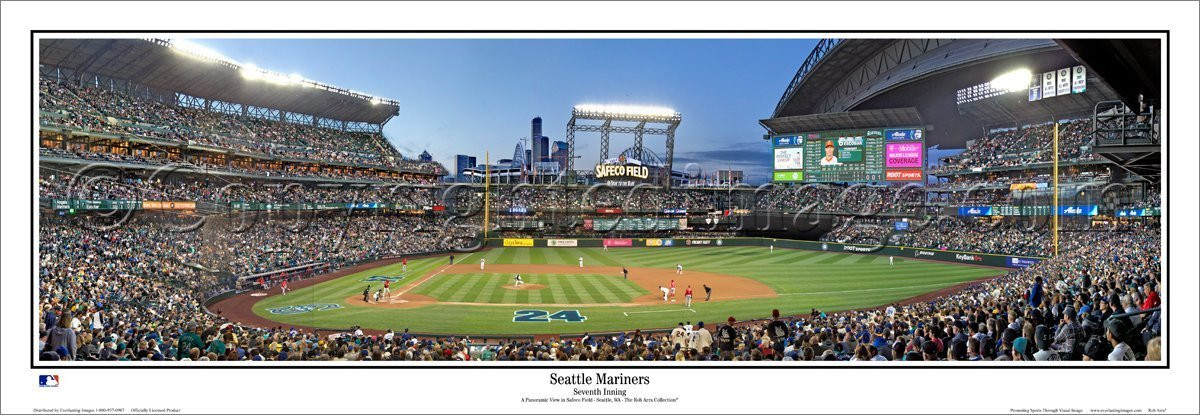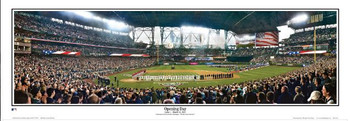Pristine and nostalgic are two words that perfectly describe T-Mobile Park, the home of the Seattle Mariners. For over two decades, fans watched Mariners games in the concrete confines of the Kingdome. While revolutionary when it opened in the 1970s, by the 1990s, the Kingdome was outdated compared to the wave of modern ballparks being built across the country. The Mariners began advocating for a new, state-of-the-art facility to improve the fan experience and generate more revenue, as the team faced significant financial losses of $17 to $20 million in 1993 and 1994. The team also made it clear they would not sign a long-term lease to stay in Seattle unless construction for a new ballpark began by 1996.
The push for a new stadium was not just about baseball—it was seen as an opportunity to strengthen the community and drive economic development. In 1994, the King County Stadium Alternatives Task Force was formed after tiles from the Kingdome’s roof fell onto seating areas, forcing the Mariners to play on the road for the remainder of the season. In 1995, the Governor and King County established the Public Facilities District to oversee the site selection, design, construction, and management of a new ballpark. Although voters rejected a sales tax increase to fund the project in September 1995, the Washington State Legislature authorized funding a month later. After evaluating three potential sites, the location just south of the Kingdome was chosen.
In February 1997, the Mariners unveiled plans for the new ballpark. Following the neo-traditional design trend of the 1990s, the ballpark featured a brick façade, natural grass, and a retractable roof—a necessity for Seattle’s rainy climate. The retractable roof would ensure that fans traveling from as far as an hour away could enjoy games comfortably, regardless of the weather. In June 1998, Seattle-based Safeco purchased the naming rights for $40 million over 20 years, and the ballpark was named Safeco Field. Following the 2018 season, the ballpark was renamed T-Mobile Park after the cellular company acquired the naming rights in a 25-year, $87.5 million deal.

A capacity crowd filled the stadium for its opening day on July 15, 1999. T-Mobile Park features three levels of seating that extend from the left-field foul pole around home plate to the right-field foul pole and into right-center field. Bleacher seating is available above the bullpens in left field and above the hitter’s backdrop in center field. Towering above the bleachers in center field is the main video/scoreboard.
The ballpark’s retractable roof is one of its most impressive features. Designed to keep fans dry during rainy days, the roof covers the entire stadium without fully enclosing it, preserving an open-air atmosphere. When open, the roof rests above and behind the right-field seats. The structure spans nearly nine acres, weighs 22 million pounds, and contains enough steel to build a 55-story skyscraper. It glides on 128 steel wheels powered by 96 ten-horsepower electric motors and takes 10 to 20 minutes to open or close at the push of a button.
T-Mobile Park offers fans a variety of unique and exciting experiences. The Bullpen Market, located behind left field, features interactive games, local food vendors, an open-pit barbecue, and personalized Fan Walk bricks—all with excellent views of the game from behind the center-field fence. Lookout Landing, situated at the end of the left-field line on the upper deck, provides stunning views both inside the stadium and across the city. The Outside Corner Picnic Patio, located above the Home Plate Gate entrance, offers breathtaking views of Puget Sound along with tables and benches for a relaxing pre-game picnic. For younger fans, the Children’s Hospital Playfield in center field features baseball-themed playground equipment.
In 2012, the Mariners invested $15 million in upgrades to T-Mobile Park, including the installation of a new video scoreboard and the addition of “Edgar’s,” a restaurant named after Mariners legend Edgar Martinez, located in the left-field corner. Ahead of the 2013 season, the Mariners moved the outfield fences closer to home plate to make the park more hitter-friendly. Left-center field was reduced from 390 feet to 378 feet, center field from 405 feet to 401 feet, and right-center field from 385 feet to 381 feet. The left-field wall, previously 16 feet high, was lowered to 8 feet, and the manual scoreboard above the fence was moved out of play. These changes aimed to increase offensive production in a ballpark historically challenging for hitters.
T-Mobile Park continues to evolve as a premier sports venue. In July 2023, it hosted its second MLB All-Star Game, further cementing its status as a world-class ballpark. The stadium hosted the NHL’s 2024 Winter Classic between the Vegas Golden Knights and the Seattle Kraken on January 1, 2024.
With its combination of modern amenities, breathtaking views, and unique features, T-Mobile Park remains a cherished destination for Mariners fans and a crown jewel in Major League Baseball.


















